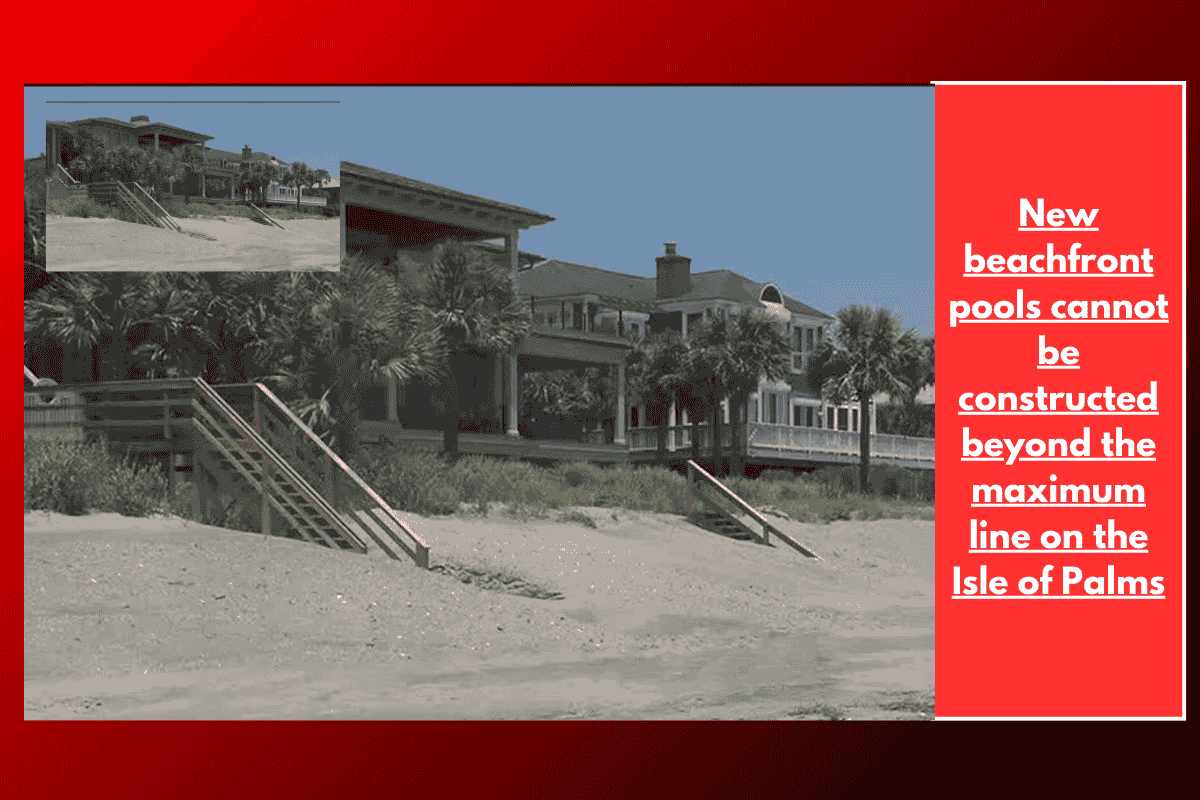ISLE OF PALMS, S.C. – The Isle of Palms City Council recently passed a new ordinance that restricts beachfront properties on the southern half of the island from building pools beyond the maximum build line due to ongoing concerns about erosion. This new rule applies to properties from Breach Inlet to 10th Avenue, an area that has experienced increased erosion in recent years.
Protecting the Beachfront from Erosion
Mayor Phillip Pounds explained that for decades, building pools beyond the maximum build line was allowed in the area because the beach had been accreting, or gaining sand, over time. However, in the past two years, the region has experienced significant erosion, especially near Breach Inlet. As a result, pools built beyond the build line have become at risk.
“This area had been accretional for 50 years, and it made sense to allow pools beyond the build line. But now, after the erosion we’ve seen in the last two years, we need to rethink that,” Mayor Pounds said.
To preserve the beachfront and protect properties, the city has rolled back the rule that previously allowed new pools to be built beyond the build line. The new ordinance prohibits the construction of any new pools past the maximum build line from Breach Inlet to 10th Avenue.
Addressing the Erosion Concerns
Riley Egger from the Coastal Conservation League emphasized the vulnerability of the area due to its proximity to an unstabilized inlet, which can cause rapid and significant erosion. “Our beaches are extremely dynamic, and Isle of Palms is located next to an unstabilized inlet, which increases erosion in certain areas. It’s critical to carefully manage development to protect our beaches and coastal community,” Egger said.
The new ordinance only affects oceanfront properties in the area between 10th Avenue and Breach Inlet that do not currently have a pool. Existing pools in this region will be allowed to remain and can be repaired in place if damaged.
Community and Economic Considerations
Mayor Pounds acknowledged that government restrictions can be controversial, but he believes this change is necessary for the long-term health of the community and the preservation of public beaches. “This is about helping homeowners make smart decisions while also protecting the public beach and ensuring it remains accessible for everyone,” he said. “We want to make sure that we keep our public beaches open for residents and visitors, no matter the tides or erosion cycles.”
Long-Term Beach Preservation Efforts
Pounds stressed that this new ordinance is a targeted measure aimed at addressing immediate issues caused by erosion. The hope is that it will help protect the public beach and prevent further damage in the affected area.
Egger also pointed out the importance of maintaining South Carolina’s public beaches as they are vital to the state’s economy and identity. “Our public beaches are crucial for our economy and for residents. They’re a special natural resource that defines South Carolina, and we need to have long-term strategies to preserve them,” Egger said.




 [2](https://gvltoday.6amcity.com/city-guide/play/volunteer-opportunities-greenville-sc) [3](https://www.visitgreenvillesc.com/meetings-events/meeting-planning-toolbox/group-volunteer-opportunities/) [4](https://www.greenvillesc.gov/2081/Volunteer) How to Support Local Charities in Greenville](https://mylolowcountry.com/wp-content/uploads/2025/11/Can-Illinois-Police-Search-My-Phone-During-a-Traffic-Stop-Heres-What-the-Law-Says-1200-x-800-px-2025-11-12T110330.171.png)









